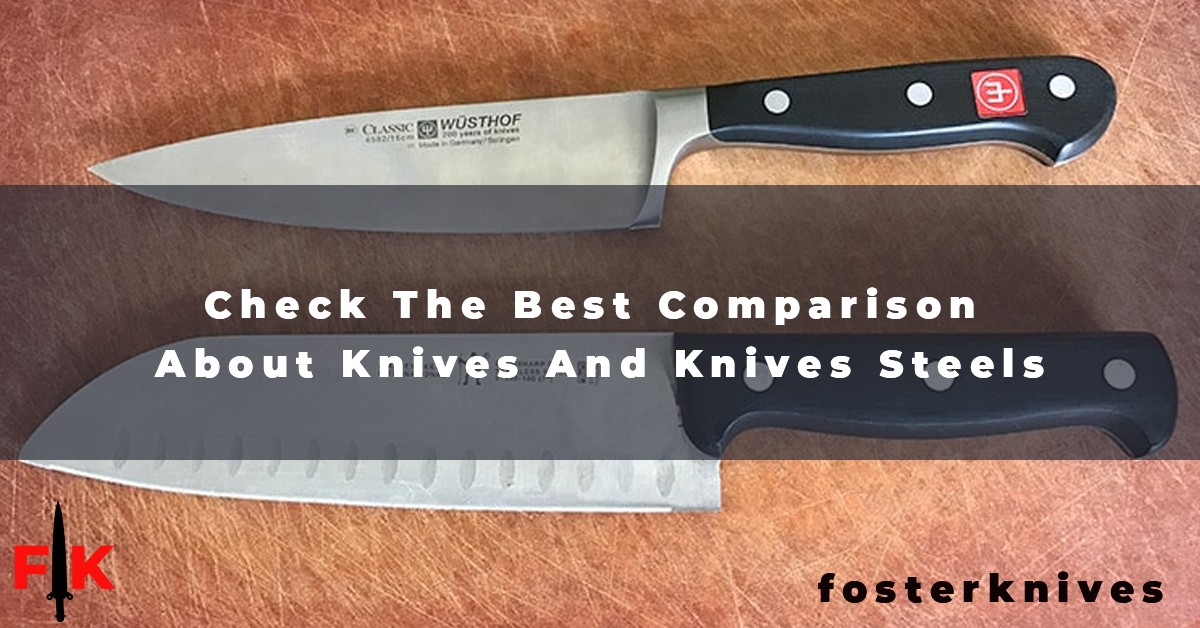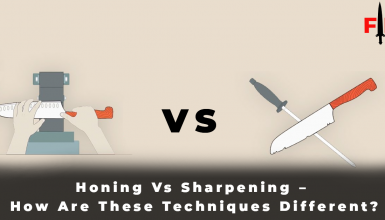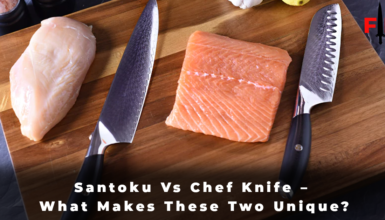There are many types of steel used for making knives and other tools. If you don’t know what types of steels are available in the market, you don’t have to worry about it. In this article, we will share a detailed comparison between knives steel and between different knives.
Let’s start with a comparison of knives steel.
Table of Contents
Types of knives steel
I’m not sure how many types of steels are available in the market. It is almost impossible to compare all the knives ’ steel, but I’ll try to compare the most used knife’s steel. First of all, I’ll share some of the information about steels used for making knives; after that, I’ll compare some steels and knives with others.
What is d2 steel?
D2 steel is a high-carbon and air-hardening steel used for making knives and other tools. It is known as one of the sharp and durable steels that are made from non-powder steel.
D2 steel contains eight different chemicals Molybdenum, Silicon, Sulfur, Carbon, Manganese, Phosphorous, Vanadium, and Chromium. If you want to know what this chemical is for, check out this article.
D2 steel requires low machinability, and it provides a powerful combination of wear resistance and toughness. D2 steel offers good toughness to the knives so that a knife can maintain its edge for a long time. D2 steel usage in the knife industry is increasing day by day because of its excellent quality and amazing properties.
What is a2 steel?
A2 steel is air-hardening steel known for its non-deforming properties, good machinability, versatility, and high level of toughness. These features make it versatile steel that combines good performance and value.
A2 steel is heat treatable and offers a hardness in the range of 57-62 HRC. A2 steel contains 5% chromium that provides high hardness to knives and tools made from this steel.
What is stainless steel?
Stainless steel is made of carbon and iron and is a group of iron-based alloys. It is a family of different steel that is resistant to corrosion by the addition of chromium. It generally contains more than 13% chromium that prevents the steel from rusting, and also provides heat-resistant properties. Some other common additives include in this steel are Molybdenum, Silicon, Nickel, Copper, Nitrogen, Manganese, Carbon, Sulfur. Most of the kitchen knives are made from stainless steel.
Check Out Other Article:
What is Damascus steel?
Damascus steel is not a single type of steel material. It is known for watery or wavy patterns and is an alloy, just like stainless steel. Damascus steel is produced by the forging of different types of stainless steel.
Damascus steel stays sharp for a long time, which is an advantage. It is best for making knives, and it is great for hunting knives.
What is VG-10 Steel?
VG-10 is stainless steel that originates from Japan. It is used in the manufacturing of knife blades. The knives made with this steel are famous for their good edge retention and durability. VG-10 steel knives are more valuable than most other knives.
VG-10 steel contains more cobalt for hardness and strength, vanadium for maintaining the edge. VG-10 steel offers a hardness in the range of 60-61 HRC, and sometimes it might get 62 HRC. This steel requires minimal care to avoid corrosion and maintaining the edge. Moreover, the knives made with this steel are easy to sharpen.
What is VG-max Steel?
VG-max steel is the latest edition in the VG steel series. It is one of the super steels that have gained appreciation throughout the world in the kitchen knife industry. VG-max steel is based on VG-10 steel and basically an improved version of it.
VG-max steel has great edge retention and has the ability to maintain the edge of the knives for a long time. Moreover, you can easily the knives made from this steel. VG-max steel is heat treatable and offers a hardness in the range of 60-61 HRC. This high hardness of the steel ensures that the knives will not break under high pressure.
What is s30v steel?
S30v is stainless steel mainly used for making pocket knives and the blades of steel knives. It is also used to make some steel tools, and most of the steel tools in the US are made from this steel.
S30v steel offers some amazing properties like it is corrosion-resistant and wear-resistant. S30v steel is heat treatable and offers a hardness in the range of 58-61 HRC. Moreover, s30v steel will maintain the knives’ edge for a long time.
What is 5160 high carbon steel?
5160 is a chromium and high-carbon spring steel. This steel offers excellent toughness, a high level of flexibility, and outstanding fatigue resistance. However, 5160 steel can be a bit difficult to weld and machine; 5160 steel requires special procedures for welding and machining.
5160 is very durable steel that is also very flexible. It is good steel for knives, but you will not find it in many knives. It is mainly used in large knives and swords, like survival knives.
Check Other Comparisons:
Comparisons of knives steel
1. a2 vs d2 tool steel
| A2 steel | D2 steel | |
| Rustproof | Yes | No |
| Stainless steel | Yes | Semi-stainless |
| Rockwell hardness | 57-62 HRC | 55-62 HRC |
| Wear-resistance | Less wear-resistant than d2 steel | Yes, but more wear-resistant than a2 steel. |
| Toughness | Tougher than d2 steel | Less tough than a2 steel |
| Edge retention | 6/10 | 3.5/10 |
| Corrosion resistance | 3/10 | 4/10 |
| Ease of sharpness | 6/10 | 4/10 |
Read More: What is SK5 Steel?
2. d2 steel vs s30v
| S30v steel | D2 steel | |
| Rustproof | No | No |
| Stainless steel | Yes | Semi-stainless |
| Rockwell hardness | 58-61 HRC | 55-62 HRC |
| Wear-resistance | Less wear-resistant than d2 steel | Yes, but more wear-resistant than a2 steel. |
| Toughness | 6/10 | 6/10 |
| Cost | More costly | Less costly |
| Edge retention | 5/10 | 3.5/10 |
| Corrosion resistance |
5/10
|
4/10 |
| Ease of sharpness | 7/10 | 4/10 |
3. Damascus steel vs Stainless steel
| Damascus steel | Stainless steel | |
| Corrosion resistance | Yes | Yes |
| Surface patterns | Wavy patterns | Plain shiny surface |
| Uses | It can be used to make knives and other things. | It can only use for making knives. |
| Durable and sharp | Yes | Yes |
| Hold an edge | It holds the edge longer than stainless steel. | It may hold the edge shorter than Damascus steel. |
| Rustproof | It is more likely to rust than stainless steel. |
It is less likely to rust than Damascus steel.
|
Comparisons of knives
1. Stainless steel vs Carbon steel knife
| Stainless steel knives | Carbon steel knives |
| Stainless steel is softer than carbon steel | Carbon steel is harder than carbon steel |
| Stainless knives contain iron and high-carbon | Carbon knives contain iron and high-chromium content. |
| Resistant to rust | Vulnerable to rust |
| Stainless steel knives are hard to sharpen. | Carbon steel knives are easy to sharpen. |
| It stays sharp for a long time. | Don’t stay sharp for a long time. |
| Less wear-resistant | Wear-resistant |
| Stainless steel knives are very easy to maintain | Carbon steel knives require special care for maintenance |
| Less brittle | Brittle |
| More expensive than carbon steel knives | Cheaper than stainless steel knives |
| Check Price On Amazon | Check Price On Amazon |
Read More: Slicing Brisket Knife
2. Ceramic knives vs Steel knives
| Ceramic knives | Steel Knives |
| The blades of ceramic knives are made using a hard ceramic that compromises—zirconium oxide. | The blades of steel knives are made with a combination of carbon, iron, titanium, and Other materials. |
| Ceramic knives are more durable than steel knives. | Steel knives are less durable than ceramic knives. |
| The blades of the ceramic knives are a bit difficult to sharpen. | The blades of the steel knives are quite easy to sharpen. |
| Ceramic knives can be sharpened using diamond-dust-coated sharpening wheels. | Steel knives can be sharpened using whetstones, honing rods, sharpening rods or steels, and some others. |
| Ceramic knives are more versatile. | Steel knives are less versatile. |
| Ceramic knives are lighter than steel knives. | Steel knives are heavier than ceramic knives. |
| Ceramic knives don’t break. | Steel knives can be break when cutting hard food items. |
| Ceramic knives are costly than steel knives. | Steel knives are less expensive and are more affordable. |
| Check Price On Amazon | Check Price On Amazon |
3. Chef’s knife vs Santoku knife
Both these knives are designed to handle most kitchen tasks. Both are sharp and used for a variety of cutting tasks such as cutting, chopping, and slicing. However, there’re some differences too that we’ll share in this part.
| Chef’s Knife | Santoku Knife |
| Chef’s knife features a longer blade at about 8-12 inches. | Santoku knife features a shorter blade at about 5-8 inches. |
| A chef’s knife usually has thin blades. | A santoku knife has broad blades. |
| Chef’sknives such as Crusador are made of German stainless steel. | Most santoku knives are made of high-carbon steel. |
| The chef’s knife comes with a bolster. | Santoku knife connects directly to the handle without a bolster. |
| Chef’s knives are heavier in weight. | Santoku knives are lighter in weight. |
| Chef’s knives come with a 15-degree sharp cutting angle per side. | Santoku knives come with a 10-degree cutting edge per side. |
| Chef’s knives are more expensive than Santoku Knives. |
Santoku knives are less costly and are affordable.
|
| Check Price On Amazon | Check Price On Amazon |
Read More: Best Butcher knife Sets
4. Nakiri knife vs Usuba knife
| Nakiri knife | Usuba knife |
| Nakiri knife is a Japanese kitchen knife, and the knife’s blade ranges from 5-7 inches. | Usuba knife is also a Japanese kitchen knife, and the knife’s blade ranges from 6.5-9.5inches. |
|
Nakiri knife comes with a double-bevel blade that is usually shorter in length.
|
Usuba knife comes with a single-bevel blade that is usually longer. |
| Nakiri knife is suitable for both right and left-handers. | Usuba knife is suitable for right-handers or left-handers. |
| Nakiri knife features western handles. | Usuba knife features Japanese handles. |
| Nakiri knife is best for cutting vegetables. | Usuba knife is best for fine or decorative cutting. |
| Nakiri knives are lighter in weight. | Usuba knives are heavier in weight. |
| Nakiri knives are easy to sharpen. | Usuba knives are a bit tough to sharpen and require additional skills. |
| The price of a Nakiri knife is comparatively low. | The price of an Usuba knife is more than a Nakiri knife. |
| Check Price On Amazon | Check Price On Amazon |
Ceramic knives pros and cons
Ceramic knives are made from advanced ceramic material, which itself is zirconium oxide which is stronger than carbon steel, carbide, and even titanium. Ceramic knives are the best option for those who do a lot of dicing and chopping in the kitchen. Ceramic knives require little maintenance, so that these knives may be the perfect option for you.
You have to keep in mind that a ceramic knife is not useful for cutting bones or frozen items because of the brittleness of the blade. However, ceramic knives are good for dicing vegetables and fruits.
Read More:
Conclusion
There’re many types of steel used for making knives and other tools. It’s almost impossible to compare all the knives ’ steel, but I have tried my best to compare the most used knife’s steel. Moreover, I have compared some knives as well.
I hope you have gone through the article and now you have known which steel or knife is best for you. If you have any other questions related to steel or knife, you’ll be most welcome to leave your comment below. I will try my best to provide a solution as soon as I can.
FAQ’s



